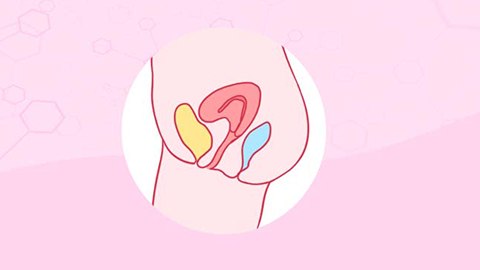What is the difference between a retroverted uterus and an anteverted uterus?
Generally, retroverted uterus and anteverted uterus are two common positions of the uterus within the pelvic cavity. Their differences mainly include variations in orientation, probability of conception, menstrual performance, compression symptoms, and examination findings. Detailed analysis is as follows:

1. Orientation Differences: An anteverted uterus refers to the uterine body tilting forward, with the cervix pointing downward toward the posterior vaginal fornix, and the entire uterus lying close to the bladder, positioned relatively forward in the pelvis. A retroverted uterus refers to the uterine body tilting backward, with the cervix pointing upward, away from the bladder and closer to the rectum, positioned relatively backward in the pelvis.
2. Conception Probability Differences: In an anteverted uterus, the cervix is more easily immersed in semen, allowing sperm easier access through the cervix into the uterine cavity to combine with the egg, resulting in a relatively higher probability of conception. In a retroverted uterus, the cervix is positioned higher, making it difficult for semen to remain around the cervix, slightly increasing the difficulty for sperm to enter the uterine cavity, resulting in a relatively lower probability of conception. However, this typically does not affect normal fertility.
3. Menstrual Performance Differences: Women with an anteverted uterus generally experience smoother menstrual blood discharge, with mild dysmenorrhea symptoms and less noticeable abdominal heaviness. In women with a retroverted uterus, menstrual periods may cause the uterus to tilt backward, compressing the nerves of the lumbosacral region, leading to significant lumbosacral pain. If menstrual blood discharge is not smooth, dysmenorrhea may worsen, accompanied by abdominal heaviness.
4. Compression Symptom Differences: Due to its forward position, an anteverted uterus may more readily compress the anterior bladder as it enlarges, causing frequent urination and urgency. In a non-pregnant state, a retroverted uterus exerts less pressure on the bladder. However, when the uterus enlarges or there is pelvic inflammation, it may compress the rectum posteriorly, leading to difficulty in defecation and anal heaviness.
5. Examination and Palpation Differences: During a gynecological bimanual examination, the body and cervix of an anteverted uterus are easier to palpate, with clear tactile sensation, making the examination procedure relatively smooth. For a retroverted uterus, adjustment of palpation techniques is required to clearly feel the uterine body. Especially in cases of severe retroversion, a three-handed examination may be necessary to accurately determine the position and size of the uterus.
In daily life, both anteverted and retroverted uteri are normal physiological conditions and generally do not affect health. Maintaining good lifestyle habits and undergoing regular gynecological examinations can help monitor uterine condition and maintain reproductive health.




